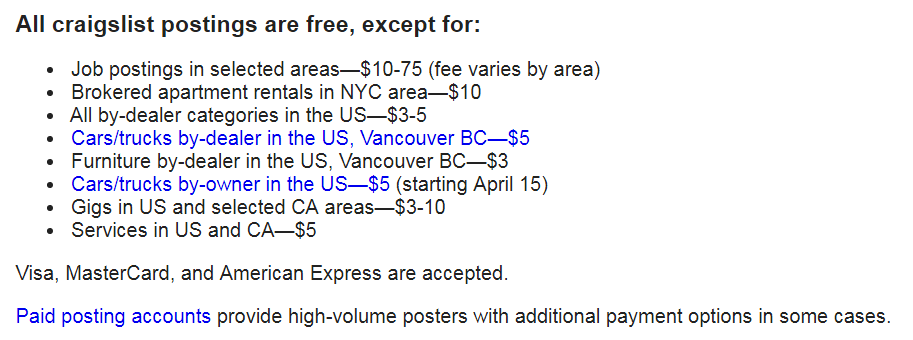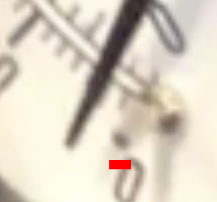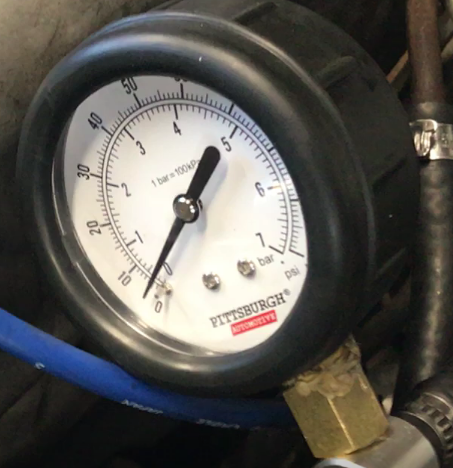Everything posted by Zed Head
-
We're bringin' back the Flat Tops!
It was working...
-
We're bringin' back the Flat Tops!
That is an odd statement. It, in essence, removes the fusible link, since a fusible link is a smaller diameter wire.
-
I need everyones input on this one (Combo and T/S switches)
The slidey thing might be the mechanical part that turns it off. But it can keep the internal switch from staying on, if I recall right. I've hosed mine down with contact cleaner like site showed and it fixed it. Both the dimmer and the signals. They get gummed up.
-
I need everyones input on this one (Combo and T/S switches)
If you have one turn signal it seems likely that you just have a dirty contact on the other one. Can't remember exactly what they look like but they slide and wear and get grimy over time as the wheel is turned. I think the contact point might be on the back of the wheel. I have a 78 unit in the garage I can pull out and look at. If you have one you should be able to get the other to work, I think.
-
Alternator Upgrade for '71 240Z
It is a straight bolt-in , plug-in swap. When it's done you'll have a 60 amp alternator, internally regulated. No need to worry about modifying wires and other things, your electrical system will pull the same amount of current. You won't smoke any wires with the upgrade to 60 amps. The other mods are good to have, but nothing extra is necessary for the MSA upgrade.
- Engine test stand
-
Swapping to f54/p90
Does the P90 have carb manifold mounting holes? You'll need the right gasket, not the L24 gasket, since you have injector cutouts in the head. The P90 exhaust ports are rectangular so your L24 manifold might work. Not sure if the rectangles are smaller on the smaller engine's exhaust manifold though. You'll want to measure. People who know say that a more free-flowing exhaust system is the first best thing you can do to release some power. Those small L24 exhaust pipes left hanging in your picture might need some changing. I think that the rest of the parts, externally, are all swappable. Looks like some fun.
-
Engine test stand
Ahh, the old stuck injectors. I remember that. As horrible as the engines sound when they have dead cylinders I don't think it really hurts them much at low RPM. Since you have a cooling system now maybe you could let it run while you tap the injectors, swap injectors plugs, run some electrical checks, squirt the occasional blast of starter fluid in, etc. The injectors might be slow to close, I think that the solenoid is stronger than the closing spring. Maybe you have some rich cylinders. Hot injectors will probably loosen up more than cold. Have you made sure that the computer and injectors have a good ground back to the battery? Since you have a funky wiring setup. One of those commonly overlooked things.
-
Engine test stand
What's the details on the engine? How much work have you done on it?
-
Picking up a 1977 280z 6 Hours Away. Tips?
You need to remove the calipers to remove the rotors and hubs. The rotors are bolted to the hubs, they are essentially one piece. You can hang the calipers using a strong string or wire, you don't have to break the brake fluid seal. But, I think that it's possible to change the lugs while everything is assembled. It's easier to have the hubs off and use a press, of course, but you can knock the old ones out and use stacked nuts and/or washers to pull the new ones in, while they're on the car. Just takes a little more ingenuity.
-
Craigslist $5 to sell a car as of today
Now someone else will have more info about us. Credit card, Paypal (anybody noticed what a pain Paypal is now), whatever... https://www.craigslist.org/about/help/posting_fees
-
1976 280z engine runs rough then dies, will not idle.
Since it seems that the PO's mechanic might have "hacked" some things to get it to pass emissions, a new plan might be in order. A basic tuneup maybe. Confirm initial timing at idle, confirm valve lash is set correctly. Have cylinder pressures been measured yet? Has the cylinder head and block combination been confirmed? There is a low compression ratio NA engine floating around out there that we helped a guy put together. It would be nice to see a summary of engine specs and actions taken so far. Cylinder head, block (the engine serial number should match the plate on the fender well). Too many pages to go back through the whole thing. My 76 has a 78 engine in it and a bunch of other minor mods. You never know what the trail of PO's have done. From Post #1 - "1976 280z California edition (manf. date Sept.1975). Bought the car in late Jan. 2019, car passed emissions test and it started and drove fine until 2 weeks ago when problem first occurred."
-
1976 280z engine runs rough then dies, will not idle.
I remember a past thread, maybe several, where intake vacuum was being used to diagnose an engine problem and they had a really low number. My premise at the time was that intake vacuum only really showed the quality of the pistons, rings, and valves and wasn't good for much else. Then they found a giant vacuum leak. The lesson I got from that was that intake vacuum is really only good for the fine details. I could be wrong, of course, but I don't get much out of intake vacuum readings when they are way off. In theory, if the injectors are squirting enough fuel, you could have a leak so big right at the injectors themselves, that intake vacuum could be close to zero and the engine would still run. Air and fuel get sucked in by the pistons, they don't care where it comes from. Maybe the PO's mechanic didn't find the main vacuum leak and adjusted the AFM to compensate. Might be time to be squirting some carb cleaner or similar at the usual leak points. The base of the injectors is a good start, since they were worked on. The big positive here is that the engine will idle steadily. So you can run a bunch of tests. Take good notes and don't assume anything. Get numbers.
-
1976 280z engine runs rough then dies, will not idle.
Nah, just plain old chicken. There's a lot of good stuff in the thread that you should recheck, all the stuff that people mentioned. The EGR and the AFM glue blobs and the CSV and the coolant temperature sensor and the TPS (actually TVS). The AFM and the sensor are the most likely. Take a magnifying glass and see if you can tell if the glue blobs are not where they started from. Check the coolant sensor circuit at the ECU connector first, not the actual sensor. Make sure the TVS isn't on WOT. Check, check, check...
-
1976 280z engine runs rough then dies, will not idle.
Has anybody confirmed that the injectors are the factory green or tan NA injectors and not the purple/brown turbo injectors? Always worth confirming.
-
1976 280z engine runs rough then dies, will not idle.
The checklists in this book will tell you a lot. Good news on the FPR, although you do have an extra one now. Weird that you know what I'm cooking for dinner...
-
1976 280z engine runs rough then dies, will not idle.
It's your horse. I think I'm out. This isn't about making an old Z run right anymore. Good luck.
-
1976 280z engine runs rough then dies, will not idle.
You're not really winning anything by showing that your previous posts were unclear. You're just showing that what I said was right. The needle stop is zero.
-
1976 280z engine runs rough then dies, will not idle.
Actually it's a sign of inconsistency. The gauge was stuck at 3 for a while, then it's at 0. It fits the overall randomness of the readings from that gauge.
-
1976 280z engine runs rough then dies, will not idle.
I think that we've all been just farting around with a bad gauge the whole time. Pittsburgh is a Harbor Freight brand. It's been fun. I have three gauges in my garage, two good ones and bad one (but with a known offset). His FPR's are probably fine. The AFM has probably been adjusted, by somebody, in the past. Might have some high resistance on the coolant temperature circuit. But, without "knowns" you're just stumbling around in the dark.
-
1976 280z engine runs rough then dies, will not idle.
-
1976 280z engine runs rough then dies, will not idle.
-
1976 280z engine runs rough then dies, will not idle.
Looking for causes for the variety of different readings.... I notice that gauge is upside down in the 5 psi reading. If you can get the gauge and FPR free on the end of the hose shake it around, turn it upside down, sideways, etc. and see if the reading stays constant. Just for reference, most of us would connect up a gauge, get the pump running, and the needle would jump to 36 - 38 psi and just sit there. Nice and steady, within seconds. Maybe you have something loose in your gauge. You really should not be having this much trouble getting a good consistent reading. Even if it's high, it should be 44 psi every time you disconnect the vacuum hose, or just on battery power. Even with a weak battery, really, you should get 36 - 38 psi. A weak battery will just take longer to get there, but probably not even a noticeable delay. The FPR does not open until the spring pressure inside is overcome. It's a pressure relief valve.
-
Lash pad fell off top of valve spring
Diseazd said that his friend just fixed the tank (and replaced the fuel, I assume) . No mention of anything else. Marvel Mystery oil is basically just like gasoline, in solvent power. A good old Italian tuneup might do it. Just wear off the goo. http://www.marvelmysteryoil.com/media/1256/marvel-mystery-oil.pdf
-
1976 280z engine runs rough then dies, will not idle.
44 - 36.3 = 7.7 psi. That is not 1 - 2 psi higher. I don't think that you're understanding how the FPR works. With no vacuum on the FPR port the pressure is supposed to be 36.3 psi. It doesn't fluctuate. Some of them are apparently set for about 38 psi. But none of them are set for 40 psi or above. No matter what they are set for, with no vacuum on the port the reading should be the same every time.










